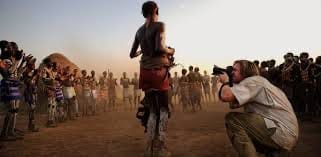Column, DNEWSINFO– Inclusive and diverse representation in modern photojournalism is essential for capturing the true complexity of the world we live in
Accurate storytelling that reflects a wide range of perspectives and experiences helps break down stereotypes and promotes greater understanding among audiences. By giving voice to underrepresented communities and individuals, photojournalism empowers those often marginalized in mainstream media. This approach not only fosters credibility and trust between media outlets and diverse audiences but also enriches the quality and depth of storytelling.
Key to inclusive representation is diverse storytelling that features various cultures, backgrounds, and lived experiences. Authentic representation avoids stereotypes, tokenism, and cultural appropriation, ensuring that subjects are portrayed with dignity and respect. The language used in photojournalistic narratives must be sensitive and inclusive, reflecting respect for all groups. Equally important is diversity behind the lens—encouraging participation from photographers, editors, and media professionals from different backgrounds broadens the range of stories told and perspectives shared.
The benefits of inclusive representation are far-reaching. It promotes empathy by encouraging audiences to understand and connect with diverse communities on a deeper level. This connection can foster social change by highlighting issues of inequality and inspiring action toward a more equitable society. Inclusive photojournalism also enhances the credibility of media organizations by building trust with a broader audience base. Moreover, it supports creative storytelling by encouraging innovative, nuanced narratives that move beyond clichés and simplistic portrayals.
Despite its importance, inclusive representation faces challenges. Overcoming implicit biases in storytelling requires ongoing self-awareness and education among media professionals. Ensuring equal access to resources, training, and opportunities remains a significant hurdle for many underrepresented photographers and journalists. Building meaningful collaborations and partnerships with diverse communities and organizations is crucial to producing authentic and respectful stories. Additionally, embracing new technologies offers opportunities to amplify inclusive voices and reach wider audiences, but must be done thoughtfully to avoid perpetuating existing biases.
By prioritizing inclusive and diverse representation, photojournalism can play a powerful role in shaping a more empathetic and equitable society. Through authentic, respectful storytelling and greater diversity within the profession, photojournalism not only reflects the world more accurately but also drives positive social impact.
Edited and Compiled by Taiwo sunmisola Gift /July 14, 2025.
Discover more from DnewsInfo
Subscribe to get the latest posts sent to your email.





